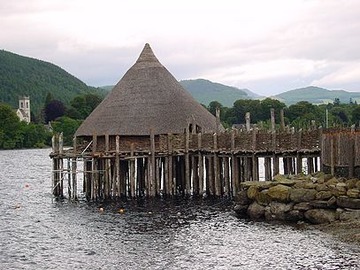Humphrey, R. and Melikian, M. (2008). The IKEA site, Glover Drive, Edmonton: Archive Report. AOC Archaeology Ltd. https://doi.org/10.5284/1002708. Cite this using datacite
| The IKEA site, Glover Drive, Edmonton: Archive Report | ||||||||||||||
| AOC Archaeology unpublished report series | ||||||||||||||
|
||||||||||||||

ADS Terms of Use and Access
|
||||||||||||||
|
||||||||||||||
| Report (in Series) | ||||||||||||||
Abstract: | During spring 2004, AOC Archaeology Group Ltd excavated and recorded part of a substantial buried timber structure in Edmonton, London, where the recently opened IKEA superstore now stands. Structural timber and brushwood remains were found that, in some respects, resemble those of crannogs, buildings or enclosures built in or over water on artificial islands or platforms. These monuments are not uncommon in Scotland and Ireland, where their date range runs from prehistoric times to only a few hundred years ago. In England and Wales, however, such structures of an apparently Anglo-Saxon date are extremely rare. Whether this structure may be accurately described as a crannog or not, it is an extremely unusual and significant discovery. |
Crannog - Wikipedia
A crannog (/ ˈ k r æ n ə ɡ /; Irish: crannóg
[ˈkɾˠan̪ˠoːɡ]; Scottish Gaelic: crannag [ˈkʰɾan̪ˠak]) is typically a
partially or entirely artificial island, usually built in lakes and
estuarine waters of Scotland, Wales, and Ireland.Unlike the prehistoric
pile dwellings around the Alps, which were built on the shores and not
inundated until later, crannogs were built in the ...

Crannog
A
crannog is typically a partially or entirely artificial island, usually
built in lakes and estuarine waters of Scotland, Wales, and Ireland.
Unlike the prehistoric pile dwellings around the Alps, which were built
on the shores and not inundated until later, crannogs were built in the
water, thus forming artificial islands. Crannogs were used as dwellings
over five millennia, from the European Neolithic Period to as late as
the 17th/early 18th century. In Scotland there is no convincing evidence
in the archaeological record of Early and Middle Bronze Age or Norse
Period use. The radiocarbon dating obtained from key sites such as
Oakbank and Redcastle indicates at a 95.4 per cent confidence level that
they date to the Late Bronze Age to Early Iron Age. The date ranges
fall after around 800 BC and so could be considered Late Bronze Age by
only the narrowest of margins.Wikipedia

